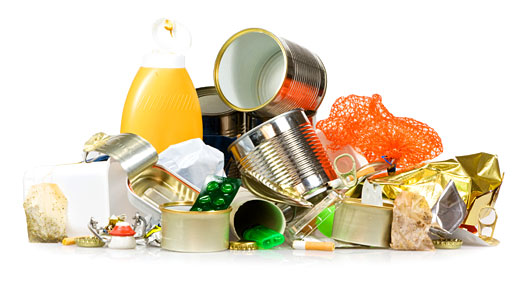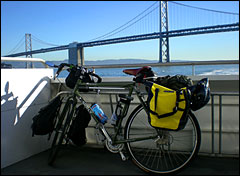living green
-
Burger King launches film Whopper Virgins, simplifies U.S. to land of fast food
In the past year or so, I have had the opportunity to meet and experience a vast variety of inspiring food, environmental, and agricultural people and places. I met small-farmers in Ethiopia experimenting with pit composting instead of synthetic fertilizers. I shared meals with activists and writers in the sustainable food movement like Tom Philpott and Anna Lappé. Perhaps most exciting has been the increasing interest in sustainable food and agriculture throughout this country and among my family and friends. Helping my parents start composting, sharing books with friends, and watching the enthusiasm for a "Farmer in Chief" left me hopeful and excited at the end of 2008.
My vision came to a screeching halt when I saw a television ad during the holidays that left me laughing: Burger King trounces around the world feeding Whoppers to unsuspecting indigenous peoples in hopes of spreading the gospel of fast food. What a great parody, I thought! Who could have thought up such an ironic idea? And as the website for Whopper Virgins flashed on the screen, I had a sinking feeling that, like those high-fructose corn syrup ads, perhaps this Burger King film was no parody.
It turns out that the ad was actually an excerpt of a longer seven-minute film. The very concept of this idea -- flying around the world, feeding hamburgers to people who have never eaten hamburgers -- is in itself strange. For the first half of the film, the crew travels to Romania where they feed utterly confused people Whoppers and Big Macs from nearby restaurant locations. Strangely enough, it seems like the same number of people has no preference or prefers the Big Mac as compared to the Whopper.
-
Consumer Reports knocks plug-in hybrid Hymotion L5 conversion kit on efficiency, value
Is a product doomed if the highest praise its evaluators can offer is "viable"?
In the February issue of Consumer Reports, CR editors tested a 2008 Toyota Prius equipped with a Hymotion L5 conversion kit sold by A123 systems of Watertown, Mass. The conversion kit failed to deliver its promised 100 mpg, but did spike the prius' average efficiency of 42-mpg up to 67 mpg for the first 35 miles of driving. But at a $11,000 a pop, CR concluded that the kit "won't save the consumer money overall."
For the truly plugged-in, however, Hymotion's lithium-ion battery conversion kit is only one of the first forays into the world of commercial plug-ins. Here in the states, 3Prong Power of Berkeley, Calif. offers a conversion with old-fashioned lead-acid batteries that promises a 10-mile all-electric range for a more affordable $6,700. And around the Pacific Rim, Chinese automaker BYD Auto presented the world's first mass-produced plug-in hybrid in December of 2008.
(h/t: autobloggreen)
-
When you get fed up with separating trash, make a quick-and-easy Spanish-style tortilla
Recycling is a hassle. Let’s face it, separating our garbage into distinct categories is a drag at the least and can sometimes feel downright foolish. You stand at your sink peeling the label of the can of tomatoes, rinsing it thoroughly, and making sure it goes in the right bin, all the while looking out […]
-
Last chance to pick your top hero/villain of 2008
Just before the holidays, we put up a list of green heroes and green villains for 2008 and asked readers to vote for their favorite (or, um, unfavorite).
Readership is low around the holidays, so I just want to bring those lists to your attention one last time, because voting closes in 24 hours! At that point we will declare winners and start handing out prizes, as soon as we come up with some prizes.
Currently the top hero is Sierra Club's anti-coal activist Bruce Nilles, with 661 votes -- a healthy lead over the second place hero James Hansen at 437. (Guess it helps to have a very large club at your back.)
Third is Barack Obama with 399 and fourth is Michael Pollan with 258.
Dead last? Poor Jim Rogers, CEO of Duke Energy, with 6 votes.
Meanwhile, flaccid apparatchik Stephen Johnson, head of the EPA, is walking away with the top villain spot. He's got 397 votes, far outpacing second place Sarah Palin (240) and third place (and personal favorite) Massey Energy CEO Don Blankenship (236).
Amusingly, Jim Rogers is losing this one too -- just 12 votes. Perhaps we should come up with a new category for this dude.
Anyway: Go vote now while you still can! We'll announce the final winners tomorrow.
-
Greenish phone from Motorola underwhelms
 It's not as cool as talking into a tin can, but thanks to Motorola, soon you can talk into recycled water bottles. Or at least a phone partially made of them. The Moto W233 Renew, which was unveiled in Vegas last week at the Consumer Electronics Show, features a faint lime hue and the delicate, lingering scent of greenwashing.
It's not as cool as talking into a tin can, but thanks to Motorola, soon you can talk into recycled water bottles. Or at least a phone partially made of them. The Moto W233 Renew, which was unveiled in Vegas last week at the Consumer Electronics Show, features a faint lime hue and the delicate, lingering scent of greenwashing.In case you'd like a side of token eco gestures with your heavy metals, Motorola invested in carbon offsets and printed the important
advertising messagesinstructions on 100 percent postconsumer recycled paper. The company is also providing a postage-paid envelope so you can return your old phone for recycling. (And if that rings a bell -- snap! -- it's because groups like Inform also provide pre-paid mailing labels so your old phone doesn't have to join the 80 percent of discarded cell phones that sleep with the trashes.) -
Umbra on commuting choices
Dear Umbra, I have three choices in how I travel the 15 or so miles between my house and my job: car, light rail, and ferry. Each one, depending on the time and the day, has its advantage in terms of time, convenience, practicality, and enjoyability. If we assume that all the logistical factors are […]
-
'Plan B' efficiency and conservation measures drop energy demand by 2020
Projections from the International Energy Agency show global energy demand growing by close to 30 percent by 2020, setting the stage for massive growth in the carbon dioxide emissions that are warming our planet. But dramatically ramping up energy efficiency would allow the world to not only avoid growth in energy demand but also actually reduce global demand to below 2006 levels by 2020.
We can reduce the amount of energy we use by preventing the waste of heat and electricity in buildings and industrial processes and by switching to efficient lighting and appliances. We can also save an enormous amount of energy by restructuring the transportation sector. Many of the needed energy efficiency measures can be enacted relatively quickly and pay for themselves.
Buildings are responsible for a large share of global electricity consumption and raw materials use. In the United States, buildings account for 70 percent of electricity use and close to 40 percent of total CO2 emissions. Retrofitting existing buildings with better insulation and more-efficient appliances can cut energy use by 20 to 50 percent. A U.S.-based group of forward-thinking architects and engineers has set forth the Architecture 2030 Challenge, with the goal of reducing fossil-fuel use in new buildings 80 percent by 2020 on the way to going entirely carbon-neutral by 2030.
-
Diesel technology has peaked
I just encountered a typical lay media puff piece about the 2009 diesel Jetta, which won the Green Car award this year.
Did you know that the next generation of diesel-powered cars and SUVs is 98 percent cleaner than diesels sold just two years ago?
No, but I also didn't know that the older models were that dirty!
Did you know these new clean diesels offer 23 to 43 percent better fuel economy than the same vehicle with a gasoline engine?
Sounds impressive! Until you go to the EPA green vehicle website and discover that the gasoline version with a standard transmission gets an air pollution score of 9 compared to this car's 6.
-
Amtrak arrests its own contest participant
Getting a grip on climate chaos is going to require a functioning rail system -- one that people will willingly use.
Would such a system arrest photographers participating in its own annual photo contest?
Every time Amtrak falls apart -- which typically occurs on days ending in "y" -- it hurts us all. If Obama wants to make concrete change fast, he could do no better than to make rail revitalization a high priority. He should aim to create a system that he would be happy to have Malia, Sasha, and Michelle use.
Meanwhile, we've got Amtrak ... because the federal government doesn't think the DMV inflicts quite enough suffering.



